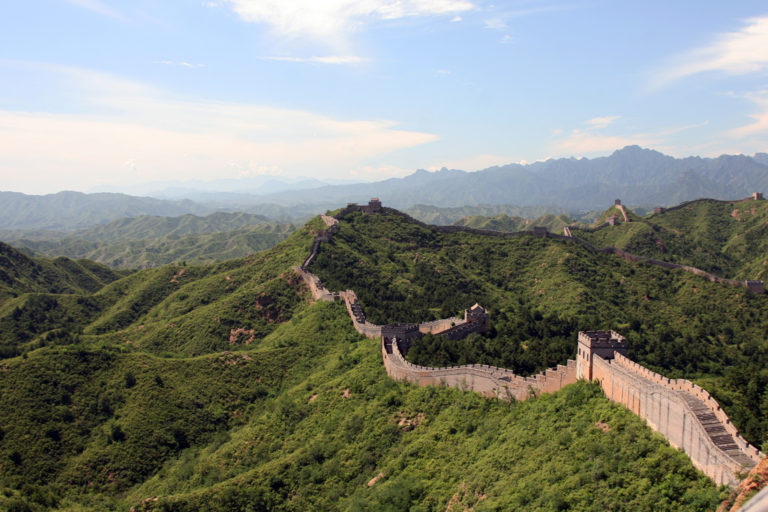“If you want to be incrementally better: Be competitive. If you want to be exponentially better: Be cooperative.” – Anonymous

Eleven of the world’s top Fortune-50 companies by
revenues, for the last fiscal 2016 are Chinese. There were none from the dragon country in that list a decade ago in 2007. That’s the result of the unstinted hard work of the previous two decades (1990-2010) that has catapulted Chinese corporations in the impressive list of world’s who-is-who. Interestingly, ten are state-owned corporations and only one from the private sector since about 75% of all businesses in China are directly or indirectly government owned unlike India where most businesses are privately owned. None from India have yet made to the select list of top 100 global giants.
The time has come for Indian entrepreneurs to think exponential growth and partner with large Chinese corporations since the two countries together are currently estimated to contribute nearly half of the global economic growth over the next decade. Cooperation in terms of technology, capital and target markets along with the pursuit of right policies can help achieve strong, sustained, balanced and inclusive development that can ensure widespread prosperity and promote horizontal growth of the people in the two countries that host one-third of the world’s population.
India’s decade has begun that will see her gross domestic production (GDP) doubling to nearly $4 trillion by 2025. With robust democratic institutional infrastructure India can absorb and profitably invest large scale foreign direct investments (FDI) and also offer a domestic driven consumer market for increased production without solely relying on exports.
I, along with my colleagues on the board of Capital Worlds, last month travelled to China and found lots of similarities, differences and compatible areas in which the businesses in two countries can cooperate to build enterprises deriving on the strengths of each other. Over the last two decades, China under the state policy built huge infrastructural milestones and world’s production factory, India has built world’s largest democracy and strong institutional framework.
The size of the population in both the countries is comparable, but the difference lies in India’s ethnic diversity and pluralism. Most Indians believe in God while majority in China are followers of Confucian philosophy that says “Man’s will, not heaven, decides.”
Chinese entrepreneurs believe in learning by mistakes and never mind taking calculated risks. In almost all major corporations, besides the board of directors and management committees, there is a supervisory board that guide and direct the company in all possible areas including labour and welfare.
This is in contrast with many of the Indian private sector companies. Some of these learnings about our two countries and cultures were shared with us by Mr Zhang Ling, chairman of the Board, Guizhou International Investment Corporation (GIIC) whom we met at the start of our two week long business journey. GIIC is engaged by Andhra Pradesh Capital Region Development Authority (APCRDA) for planning and building AP’s new capital city Amaravati.
Growing in different economic spheres, the way it has been, China is estimated to surpass the US with the most number of skyscrapers over the next few years. Some reports say China will have more than double the number of skyscrapers in the US by 2025. We also visited electric bus manufacturer Zhuhai Guangtong Automobile Co Ltd that is set to revolutionise urban transportation to make it emission and noise pollution free.
Another interesting insight was that Chinese investment institutions are not looking at established mega-corps, but instead they are looking at new companies that can be scaled up and sustained to invest and support by way of capital and technology.
Through economic integration, the businesses in India and China have a tremendous opportunity to lead global economic growth through harmonious harnessing of Indian entrepreneurship and Chinese capital and technology to create opportunities to address and expand new markets.
With the rise in per-capita income in China ($14,200), currently more than double that in India, backed by wage rise Chinese corporations are looking at newer sources of cheap labour as well as markets. India offers both besides private entrepreneurial zeal that can qualify for inbound Chinese investments.
McKinsey Global Institute (MGI) believes India is on the verge of the second-greatest urban migration the world has ever seen. In their new report, India’s Urban Awakening, MGI says India’s urban population could balloon to 590 million—nearly twice the size of the United States—by 2030. McKinsey estimates India would need to build a city the size of Chicago every year for the next two decades to accommodate her increasing population. This will no doubt lead to increased demand for such changing lifestyle goods and services. That can be translated into ever more prospects for Indian entrepreneurs to partner with Chinese corporations to tap the emerging opportunities and through cooperation build a better world.
Indian entrepreneurs will have to change their mindset and think beyond majority-owned family controlled companies.That may be good only for personal incremental growth.
For exponential growth, Let’s Go To China.





















